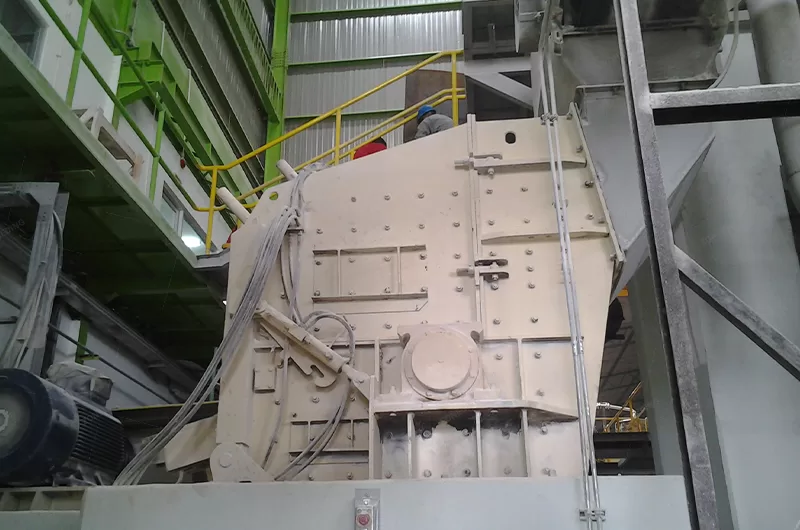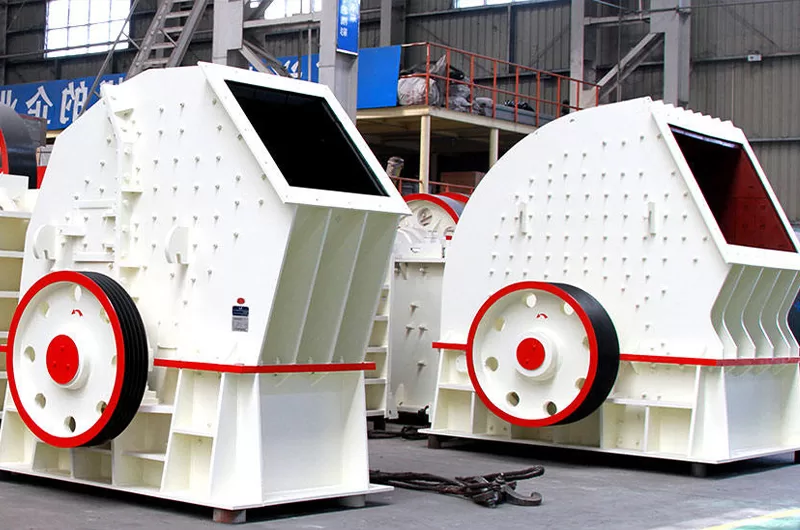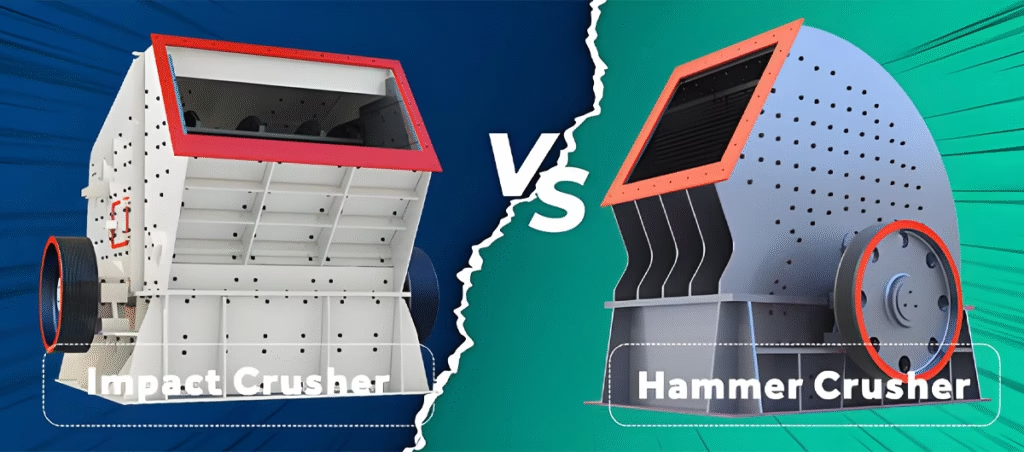Choosing between an Impact Crusher vs Hammer Crusher presents a significant decision for any crushing operation. Both machines effectively break down materials. However, their specific methods and ideal applications vary considerably. Understanding these differences assists in selecting the most suitable equipment for particular project needs. This article offers a comprehensive Crusher Comparison. It highlights the unique strengths of each crusher type. ZONEDING provides expertise in both categories, guiding clients toward efficient Aggregate Production.
Table of Contents
What is An Impact Crusher?
An Impact Crusher breaks material by delivering high-speed blows. This machine utilizes kinetic energy. A rotor spins very fast inside its crushing chamber. Special parts, called blow bars, attach to this rotor. These blow bars strike the feed material. The material then shatters along its natural fault lines. This process generates a cubical product. Engineers designed impact crushers for various rock types. Their primary strength lies in processing medium-hard and brittle materials. This includes limestone, basalt, and granite, provided they are not excessively abrasive.
What is A Hammer Crusher?
A Hammer Crusher breaks material using repeated blows from freely swinging hammers. This machine features a strong rotor. This rotor has hammers attached to it. The hammers strike the incoming material at high speeds. This action causes materials to shatter against an internal breaking plate or grate bars. This process proves very effective. It primarily handles softer to medium-hard materials. These include limestone, coal, gypsum, and shale. It also frequently produces finer product sizes compared to impact crushers.
What are Key Differences Between Impact Crushers and Hammer Crushers?
Understanding the Key Differences Between Impact Crushers and Hammer Crushers is vital for optimal equipment selection. Although both are impact-type crushers, their design and crushing mechanisms lead to very different performances and applications. These distinctions affect final product quality, operational costs, and suitable material types. Making an informed choice ensures maximum efficiency and cost-effectiveness for a project.
Crushing Principle
- Impact Crusher: This machine uses direct impact and breaking against impact plates. Material hits the blow bars on the rotor. It then gets thrown against fixed impact plates. The rocks break along natural stress lines. This method is highly effective for reducing material size. It produces a good shape.
- Hammer Crusher: This machine relies on repeated hammering. Free-swinging hammers strike the material. It shatters against a breaking plate or grate. This action causes comminution and abrasion. This method mainly crushes softer materials.
Suitable Materials
- Impact Crusher: It performs best with medium-hard to hard, yet brittle materials. Examples include limestone, basalt, granite, and dolomite. It manages these materials well when not overly abrasive. This is crucial for Hard Rock Crushing.
- Hammer Crusher: It is ideal for softer to medium-hard materials. This group includes limestone, coal, clinker, gypsum, and shale. Heavy abrasion can cause significant wear. This makes it less suitable for very hard or tough materials.
Product Shape and Size
- Impact Crusher: This machine excels at producing a cubical-shaped aggregate. The impact process creates sharp, angular particles. These are highly valued in concrete and asphalt mixes. They increase strength and reduce voids. This positively impacts the Final Product Shape Impact.
- Hammer Crusher: This machine typically produces a more flaky or elongated product. It also generates a higher percentage of fines. While excellent for applications needing fine powders, it may not be ideal for standard construction aggregates requiring cubical shapes.
Price of Machine
The initial investment for a new machine is always a crucial consideration. Here’s a breakdown of how the Price of Machine differs:
- Impact Crusher Upfront Cost: Impact crushers generally carry a higher initial purchasing cost compared to hammer crushers of similar processing capacities. This elevated price reflects their more intricate design and the necessity for specialized, high-precision components. These precision parts prove essential for maintaining the delicate balance of the rotor and the accurate alignment of impact plate mechanisms. The goal is to consistently achieve the highly desirable cubical product shape for Aggregate Production. ZONEDING’s commitment to advanced manufacturing technologies and the use of premium-grade materials in its impact crushers ensures their robust durability and high operational efficiency. This contributes to their overall value despite the higher initial outlay.
- Hammer Crusher Upfront Cost: In contrast, hammer crushers typically feature a simpler, more straightforward mechanical design. This simpler construction often translates directly into a lower initial investment, establishing them as a more budget-friendly option for projects with specific material and output requirements. While the initial price is lower, potential buyers must conduct a comprehensive evaluation of the total Crusher Operating Costs. This careful calculation should be conducted alongside the purchase price. A machine with a seemingly lower price might incur higher long-term expenses due to factors such as increased energy consumption or more frequent replacements of wear parts.
Maintenance Cost
Understanding the ongoing Maintenance Cost is critical for projecting the true operational expenses of any crushing equipment. These costs are primarily driven by the wear and tear experienced by various components, particularly those exposed to constant impact and abrasion.
- Impact Crusher Wear Parts and Costs: The most frequently replaced Wear Parts Crusher components in an impact crusher are the blow bars, which attach securely to the rotor, and the impact plates or liners that form the inner walls of the crushing chamber. Manufacturers typically fabricate these parts from exceptionally hardened materials, such as manganese steel or specialized chrome alloys. They specifically choose these materials for their durability and resistance to wear. However, when processing highly abrasive materials, such as certain types of feed for Granite crushing equipment or Basalt crushing machine, these critical components will inevitably wear down at an accelerated rate. The cost associated with purchasing and replacing these parts constitutes a significant portion of the total Crusher Operating Costs.
- Hammer Crusher Wear Parts and Costs: For hammer crushers, the primary wear components include the hammers themselves and the grate bars located at the discharge end of the crushing chamber. The hammers endure intense wear due to their repetitive strikes and continuous friction against the material being processed. Similarly, the grate bars degrade as the crushed material abrades them while passing through. Although individual hammers might appear less expensive than a single blow bar, they often require more frequent and numerous replacements, especially when consistently handling moderately abrasive materials.
How to Select the Best Crushers for Your Project?
Selecting the best crushers for a project requires careful consideration. The choice between an impact crusher and a hammer crusher significantly affects a plant’s efficiency, product quality, and long-term costs. Equipment selection should perfectly match operational goals and material characteristics. ZONEDING assists clients in making informed decisions. The company ensures clients receive the right machine for the job.
Here are the key factors to consider for Crusher Selection:
Material Characteristics: Start by thoroughly understanding feed material.
- Hardness and Abrasiveness: Is the material hard and abrasive, like granite or basalt? An impact crusher might wear out too quickly with very abrasive materials. Hammer crushers are generally not suitable for highly abrasive hard rock. For Granite crushing equipment or Basalt crushing machine, an Impact Crusher is a good choice for reshaping after primary crushing, but not for primary crushing of very hard rock due to wear.
- Brittleness: Brittle materials prove ideal for impact crushing. The impact force shatters them effectively.
- Moisture Content and Stickiness: Some materials are sticky or moist. This can cause blockages in certain crusher types.
- Feed Size: The maximum size of the material entering the crusher dictates the necessary opening size of the machine.
Desired Product Size and Shape: Final product specifications are paramount.
- Cubical Aggregate: If high-quality cubical aggregates are needed for concrete or asphalt, an impact crusher is usually the best choice. It excels at shaping particles. This has a strong Final Product Shape Impact.
- Fines or Powders: If the goal is to produce fine material or powder, a hammer crusher might be more suitable. It naturally generates a higher percentage of fines.
- Specific Size Range: What is the exact size range required for the finished product? Some crushers offer more control over specific particle sizes through adjustable settings.
Capacity Requirements: Determine the desired output.
- Tonnage Per Hour (TPH): How much material needs processing per hour? Crushers come in various capacities. Matching the crusher’s capacity to production goals is essential for efficient Aggregate Production.
- Continuous Operation: Is continuous, high-volume production required? Consider the crusher’s reliability and ease of maintenance.
Budget and Operating Costs: Evaluate both initial investment and running expenses.
- Initial Purchase Price: Impact crushers often have a higher upfront cost than hammer crushers of similar capacity.
- Wear Part Costs: Consider the lifespan and cost of Wear Parts Crusher components (blow bars, hammers, grate bars). Abrasive materials significantly increase wear part consumption.
- Energy Consumption: Factor in the power consumption of the crusher. More efficient machines reduce Crusher Operating Costs over time.
- Maintenance: How easy is it to perform maintenance and replace parts? Downtime is expensive.
Application in Crushing Circuit: Define where the crusher fits within the overall plant.
Primary, Secondary, or Tertiary: Is this crusher the first, second, or third stage in a crushing line? Primary crushers handle large feed sizes. Secondary and tertiary crushers refine the product. ZONEDING’s engineers can assist in choosing from various Quarry crusher types for each stage.
Site Conditions
Fixed vs. Mobile: Is a stationary plant needed or a mobile unit that can move to different locations? ZONEDING offers both fixed and mobile solutions to match operational flexibility.
Clients should consult ZONEDING’s team of 15 professional engineers. They provide expert guidance tailored to specific project needs. They help clients optimize crushing processes and select the ideal equipment, ensuring long-term success.
What Latest Innovations Are Shaping the Future of Crusher Technology?
The crushing industry constantly evolves. New innovations are shaping the future of Crusher Technology. These advancements focus on improving efficiency, extending machine lifespan, and enhancing environmental sustainability. Staying current with these trends proves vital for any modern aggregate producer.
Key trends and technological innovations include:
- Advanced Automation and Smart Controls: Crushers are becoming smarter. Modern machines feature sophisticated control systems, often with Siemens PLC. They integrate sensors for real-time monitoring of performance metrics. This allows for optimized settings, predictive maintenance, and remote diagnostics. Such intelligence ensures consistent Crushing Efficiency and reduced human error. ZONEDING incorporates these smart technologies into its crushing equipment.
- Improved Wear Materials: Manufacturers develop new alloys and composites for Wear Parts Crusher components. These materials offer increased hardness and toughness. This extends the lifespan of blow bars, hammers, and liners, even when processing abrasive materials like Basalt crushing machine feed. Longer wear part life means less downtime and lower maintenance costs.
- Enhanced Energy Efficiency: A significant focus lies on reducing energy consumption. New crusher designs and motor technologies extract more power from less energy. This lowers Crusher Operating Costs and contributes to a smaller carbon footprint. This makes operations more sustainable.
- Optimized Rotor and Chamber Designs: Ongoing research refines the internal geometry of crushers. These optimizations improve the crushing action itself. They lead to better particle shaping, higher reduction ratios, and increased throughput. The goal is to achieve the desired Final Product Shape Impact more consistently and efficiently.
- Mobile Crushing Solutions: Mobile crushing plants offer extreme flexibility. These units integrate crushers, screens, and conveyors onto a single chassis. They can move to the material source. This reduces transport costs and environmental impact. ZONEDING provides mobile crushing solutions that adapt to diverse site requirements.
Why Choose ZONEDING
ZONEDING brings immense experience. Established in 1990, the company offers over 30 years of dedicated expertise. It specializes in manufacturing state-of-the-art brick machines and comprehensive production lines. This long history confirms a deep understanding of crushing technologies and market needs.
ZONEDING’s product range proves truly comprehensive. The company offers everything from primary jaw crushers to efficient impact and advanced hammer crushers. It provides full-scale Aggregate Production solutions. This extensive product line means ZONEDING can serve as a one-stop solution provider for clients. Clients avoid the hassle of coordinating with multiple suppliers. The company places excellence on customization. Machines and entire crushing lines are engineered to fit exact specifications. This includes raw material types, desired output, and precise product dimensions.
Leverage ZONEDING’s deep industry experience and cutting-edge technology. Build a stronger and more efficient future for aggregate production. ZONEDING stands as a reliable partner in the crushing industry.
FAQ
- Question 1: Which crusher is better for crushing hard granite?
- For hard granite, especially for fine crushing and shaping, an impact crusher can be suitable. However, for primary crushing, a jaw crusher is typically used first. For very hard material, an impact crusher will have higher wear parts costs.
- Question 2: Can a hammer crusher produce cubical aggregate?
- Generally, no. A hammer crusher tends to produce flatter, more flaky particles and a higher percentage of fines. If cubical aggregate is needed, an impact crusher is usually the better choice.
- Question 3: What are the main parts of an impact crusher that wear out?
- The main parts that wear out in an impact crusher include the blow bars (attached to the rotor) and the impact plates or liners within the crushing chamber. Their wear rate depends on the material’s abrasiveness.
- Question 4: Is a hammer crusher good for crushing limestone?
- Yes, a hammer crusher proves very effective for crushing limestone. Limestone is a softer, less abrasive material. This makes it well-suited for the hammering action without excessive wear, establishing it as a common Limestone Crusher.




